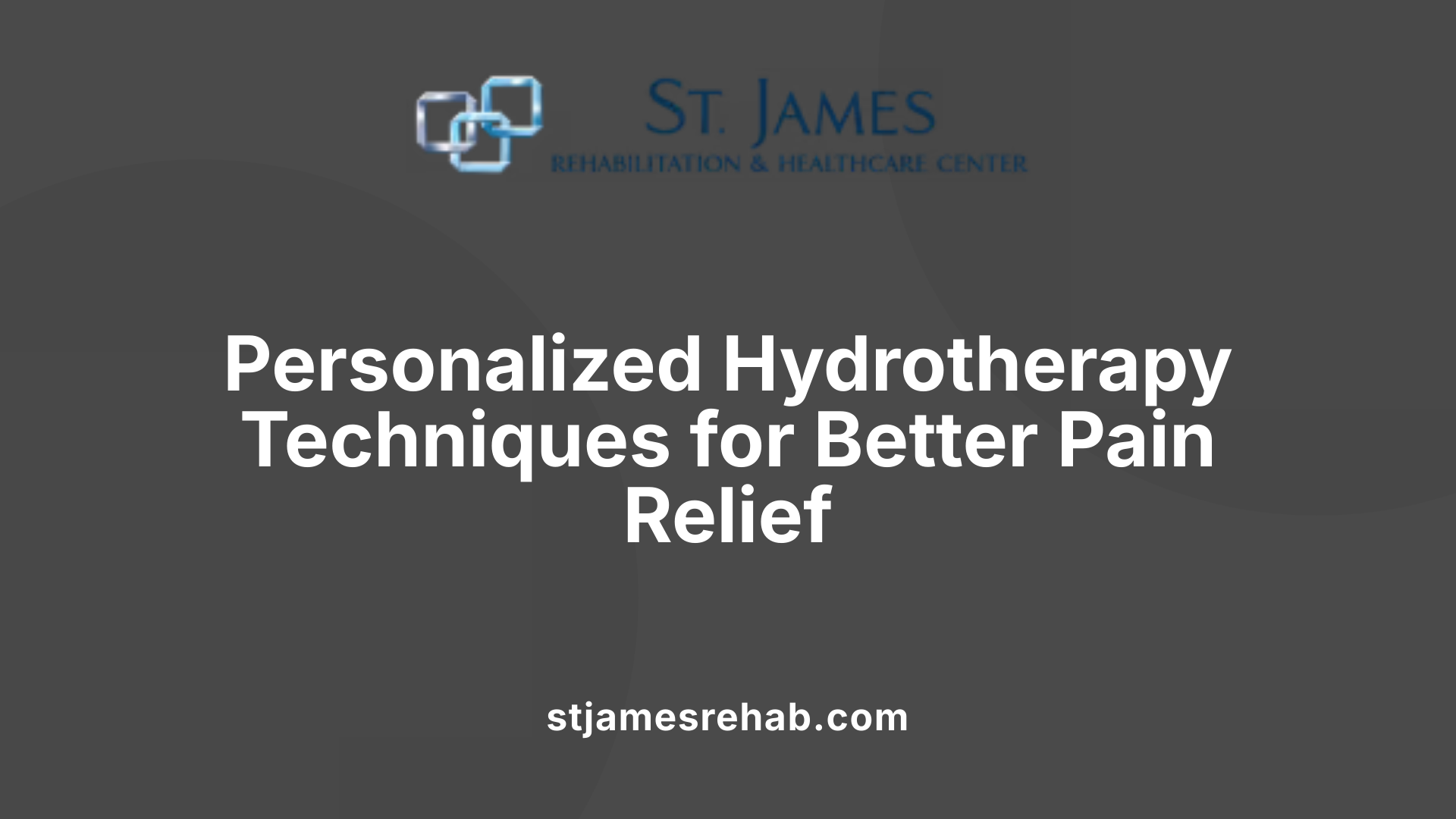The role of hydrotherapy in pain management
Harnessing the Healing Power of Water in Pain Relief

Understanding Hydrotherapy and Its Significance in Pain Management
Hydrotherapy, also known as aquatic therapy, harnesses the physical properties of water—such as buoyancy, hydrostatic pressure, resistance, and temperature—to provide a holistic approach to alleviating pain and improving mobility. Historically rooted in ancient civilizations, this modality has evolved into a vital component of modern physiotherapy, particularly for chronic and acute pain conditions. Its comprehensive application spans from musculoskeletal disorders to neurological illnesses, offering a non-invasive, drug-free alternative that complements traditional treatments.
Fundamentals and Techniques of Hydrotherapy in Pain Relief

What is hydrotherapy and how does it help with pain relief?
Hydrotherapy, also known as water therapy, harnesses the physical properties of water—such as buoyancy, temperature, resistance, and hydrostatic pressure—to lessen pain and enhance mobility. Warm water soothes tense muscles, boosts blood flow, and encourages healing. It also triggers the release of natural painkillers called endorphins and interrupts pain signals by activating thermal receptors. The supportive buoyancy reduces stress on joints, making movements more comfortable and less painful.
This therapy offers a holistic, non-invasive approach that complements traditional physical treatments. It’s effective in conditions like osteoarthritis, fibromyalgia, muscle injuries, neurological disorders, and post-surgical recovery. Overall, hydrotherapy alleviates pain, reduces inflammation, and improves mental well-being with minimal side effects, especially when performed under professional supervision.
Hydrotherapy in Practice: Tailoring Treatment for Optimal Outcomes

What procedures are involved in hydrotherapy treatments for pain?
Hydrotherapy treatments for pain utilize a variety of procedures designed to harness water's healing properties. Common techniques include warm water immersions, which relax muscles and improve circulation, and aquatic exercises tailored to individual needs to promote mobility and strength.
Other procedures like hydro-massage utilize water pressure for deep tissue relaxation, while contrast therapy involves alternating between hot and cold water to stimulate blood flow and reduce inflammation. Cold water immersion can serve to numb area-specific pain and reduce swelling.
Specific interventions such as underwater treadmill therapy, aquatic aerobics, and controlled movements in heated pools are frequently employed. These techniques are adapted in terms of water temperature, depth, and duration to maximize pain relief, flexibility, and safe movement.
Ensuring the procedures are performed under the supervision of trained professionals, usually physiotherapists or licensed therapists, guarantees safety and tailored effectiveness, especially for conditions like arthritis, fibromyalgia, or recovery from injuries.
How does individualization enhance outcomes in hydrotherapy?
Personalizing hydrotherapy plans ensures each patient receives the most suitable treatments for their unique condition and needs. This approach considers factors such as diagnosis, pain areas, mobility limitations, and personal preferences.
By assessing these elements, therapists select optimal water temperature, appropriate exercises, and appropriate session duration and intensity. This tailored plan maximizes benefits like pain reduction, increased joint flexibility, and muscle strength, while also minimizing risks such as overexertion.
Regular assessments allow for adjustments based on patient progress, ensuring the treatment remains aligned with evolving goals. Personalization fosters greater patient engagement and adherence, which are crucial for long-term benefits.
Ultimately, individualized hydrotherapy can lead to more significant improvements in pain management, functional ability, and overall quality of life.
What safety precautions are necessary during hydrotherapy sessions?
Safety is paramount in hydrotherapy, requiring comprehensive assessment and proper supervision. Patients should be evaluated for cardiovascular health, skin integrity, neurological conditions, and any contraindications such as open wounds or infections.
The water temperature should be carefully maintained, generally between 33-36°C for warmth therapy, to prevent burn risks or hypothermia.
Trained professionals should oversee all sessions to guide exercises, monitor patient's responses, and prevent accidents like slips or falls. Hygiene standards must be upheld to prevent infections, with equipment regularly sanitized.
Patients with reduced sensation, open wounds, or recent surgical wounds may need special precautions or modified treatments.
Clear instructions on post-session care and emergency procedures help mitigate risks. Adhering to these safety guidelines ensures hydrotherapy remains a safe, effective modality.
How is hydrotherapy integrated into conventional pain management approaches?
Hydrotherapy complements traditional pain treatments by adding a physical therapy dimension that leverages thermal, mechanical, and psychological benefits. It is often incorporated into multidisciplinary programs alongside medications, physical therapy, occupational therapy, and counseling.
By reducing joint impact and providing gentle resistance, hydrotherapy enhances land-based exercises, making movements easier for patients with limited mobility or heightened pain.
Post-surgical and injury recovery benefits are amplified when hydrotherapy is involved, reducing dependence on medication and improving functional outcomes.
Healthcare providers design individualized hydrotherapy sessions aligned with prescribed therapies, ensuring it supports overall goals like pain reduction, mobility enhancement, and psychological well-being.
This integrative approach fosters comprehensive pain management, which can lead to improved quality of life and decreased reliance on analgesic medications.
Harnessing Water's Therapeutic Potential for Pain Alleviation
Hydrotherapy stands as a multifaceted, evidence-based approach for alleviating pain, improving mobility, and enhancing quality of life. Its unique ability to leverage water’s physical properties—buoyancy, hydrostatic pressure, and warmth—enables targeted, low-impact therapies suitable for a broad range of chronic and acute conditions, including arthritis, fibromyalgia, and neurological disorders. Advances in research continue to validate its effectiveness, with personalized treatments and safety protocols ensuring optimal outcomes. As healthcare increasingly emphasizes holistic and minimally invasive interventions, hydrotherapy offers a promising, versatile solution for pain relief that integrates seamlessly with conventional medical and physical therapies. Its rich history and evolving practices affirm its role as an enduring modality rooted in both tradition and scientific progress.
References
- Hydrotherapy: What It Is, Benefits & Uses - Cleveland Clinic
- Impact of water therapy on pain management in patients with ...
- Hydrotherapy Techniques for Managing Chronic Pain
- Scientific Evidence-Based Effects of Hydrotherapy on Various ...
- Get in the Water: Hydrotherapy for Pain and Movement
- Hydrotherapy and Chronic Pain – All You Need To Know - Pathways
- Effective Hydrotherapy for Chronic Pain Relief - Sukino





